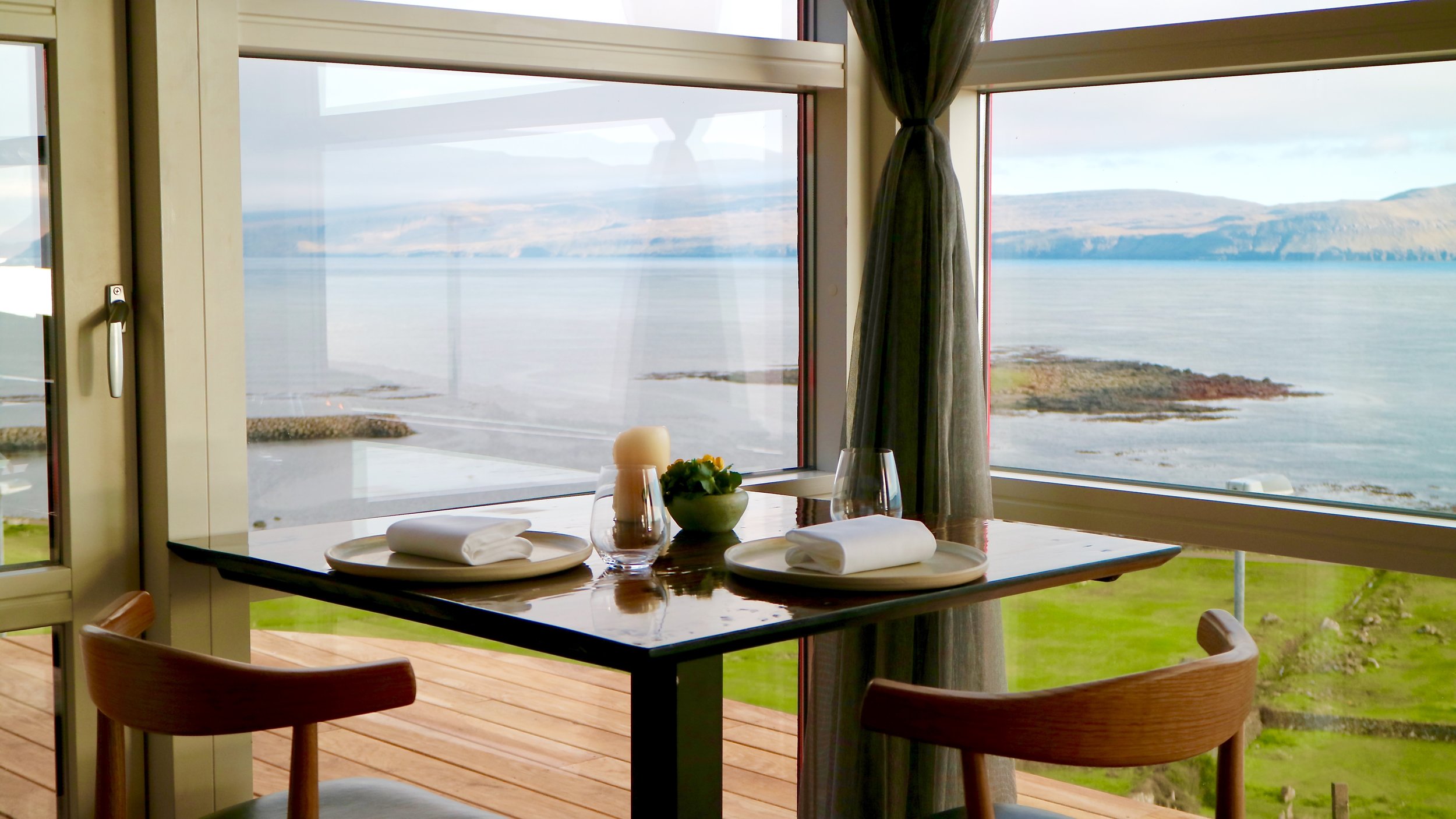The artistry of distilling all kinds of unique tastes: That’s the name of the game. And they know how to play it: Poul Andrias Ziska, Karin Visth, Johannes Jensen and the whole team. Today, the Faroese restaurant KOKS has been awarded a Michelin star. Congratulations! What a success!
What's next? After having been closed in the off season, the award-winning KOKS will open its doors again in Kirkjubøur on 11 April. Since KOKS already has been highly popular, and, from now on, I'm certain of it, will be even more, it is appropriate to book a table in advance, particularly when it comes to traveling in the summer.
Dining at KOKS: What’s it like? Amazing. An experience that totally blew me away. But that doesn't get us anywhere for the moment. Even if you took your private jet right away, you still couldn’t get a taste of KOKS at the present time. So let’s try another track. Let’s approach the art of KOKS by taking a closer look at three stunning KOKS signature dishes – and some of the Faroese stories behind them.
DISH. Skerpikjøt from Gásadalur and crispy reindeer lichen in combination with a cream of mushrooms and elderberry. STORY. The second I entered one of those air-permeable wooden shelters called hjallur for the first time, I knew something of particular importance was going on in there: A way of storing food that dates back to the old days, a distinct flavor that can be accomplished through drying meat or fish outdoors.
Ræst is unique to the Faroe Islands, it’s a special method of semi-drying, and it is characterized by its strong umami flavor. The best way to describe ræst is pleasant, savory and tasty. One of my favored Faroese foods is Skerpikjøt. Dry aged Faroese lamb, Skerpikjøt (sharp meat), is best when you slice it very thin.
On KOKS’ menu: Skerpikjøt from Gásadalur, a tiny picture-book village that sits on the edge of a tall cliff overlooking the sea. Reindeer lichen is light-colored. On the Faroe Islands, lichens can be found at many places, like flowers, mushrooms, berries and herbs. When you go out for a walk: all eyes focused. Variety is guaranteed.
DISH. Langoustine, smoked in pine. STORY. The large and succulent local langoustines can be eaten raw, cold, warm, grilled, fried or cooked. Just do as little as possible to them. But first, they have to be caught.
Procedure: After your boat has reached its requested position (buoy-marked), the hydraulic winch is called into action and the line starts to move. Lobster pots rise to the water surface, one after another. Be careful when you take the langoustines out of the pots. You definitely don’t want to get into a fight with these sharp claws.
KOKS’ head chef Poul Andrias Ziska and his team serve pine-smoked langoustines. So, what about the pine? The only artless forests in the Faroes are forests of seaweed. However, Faroese wood does exist. About 1840, pastors from Denmark came to the Faroe Islands. Their wives planted some trees in their gardens and around their houses, and some acres of planting in a few other areas did follow. My favorite little forest is located on the island Kunoy.
DISH. Dulse mousse, chocolate and fermented blueberries. STORY. As for my part, I had my first Faroese seaweed snack on a private islet west of Vágar. Tindhólmur, built up by volcanic activities, glaciation and changes in sea level. In a remote spot, you can find an area covered with flooded sinkholes. That’s where we had the seaweed, fresh from the North Atlantic.
The waters all around the Faroe Islands provide excellent conditions for various species of seaweed, through both constant current (ongoing water exchange) and stable water temperature (8-12 degrees Celsius).
Together with the dulse, chocolate and fermented blueberries perfect the funky flavor dish. At KOKS, the chefs use as many Faroese produce as possible. Ingredients that are not available locally are brought in from the other Nordic countries. Approximately 400 plants grow in the Faroes. KOKS uses about 20 wild herbs, as seasoning, primary flavor or for decorative purposes.
KOKS is on the net and on Facebook
My blog post about KOKS's sommelier: Karin Visth
Footnote: In February 2019, the Michelin Guide rewarded the KOKS with 2 Michelin Stars
Note 2: KOKS has moved to Ilimanaq, Greenland, for the seasons 2022 and 2023; also, the restaurant tours as pop-up.








